For decades, the United States has been the dominant maritime force. They still are today, but is fast losing its dominance. In terms of number of warships, China had already hit a fleet of 335 ships in 2019, more than U.S. Navy’s entire fleet of 293 ships. However, America’s fleet is much larger on a ship-by-ship basis, such as the 11 nuclear-powered aircraft carriers.
China has only 2 aircraft carriers, with a third in final assembly process while a fourth had started in 2018 but was stopped temporarily in 2019. The first carrier – Liaoning – was commissioned in 2012 and was basically an unfinished Ukrainian carrier. The Chinese’s second carrier – Type 002 – was essentially a copy of the Liaoning, a legacy Russian design, with some incremental improvements thrown in.
Unlike Liaoning and Type 002 which use ski jump to launch fighter jets, the larger version Type 003 third carrier will have a steam-powered catapult launch assist system similar to those used in the U.S. aircraft carriers. Called EMALS (Electromagnetic Aircraft Launch System), the catapult system is the same technology introduced on the U.S. Navy’s Ford Class carriers.
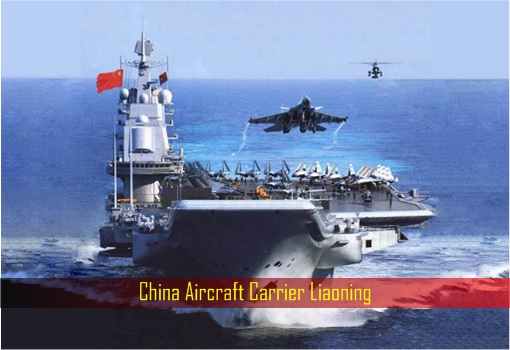
The Type 004 would be the most advanced aircraft carrier in China’s arsenal. On top of electro-magnetic launch capabilities, the fourth carrier would be the first aircraft carrier in China’s Navy that would use nuclear propulsion. The Type 004, larger than the Type 003, would also have enough power output to power “railgun” or laser weapons, at least that was the plan.
In the early 2019, China planned to have at least 6 aircraft carriers to compete with the U.S. The plan was to have at least 4 nuclear-powered carriers in the water by 2035. But the nation may stop after Type 004. The massive costs to build aircraft carriers, not to mention the operating and maintaining budgets, might have forced the Chinese Navy to change their strategy.
It was a silly idea trying to have more aircraft carriers than the United States. Without being protected or escorted by an extensive flotilla of other warships, a carrier is as good as a sitting duck and hence extremely vulnerable. Besides, the U.S. has so many aircraft carriers largely because it wants to project American military power in every corner of the globe.
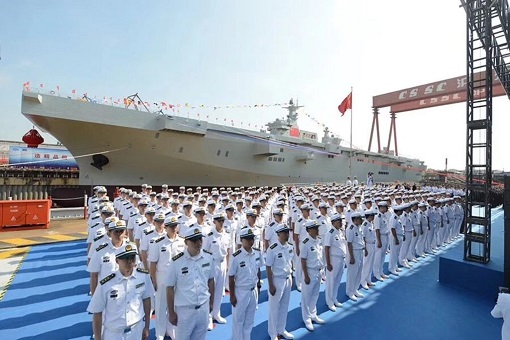
China’s top priority, on the other hand, is to protect itself from a military superpower precisely like the U.S. That explains why the Chinese have more frigates and corvettes than the U.S. It’s more cost-effective to deploy smaller warships built for speed and manoeuvrability in regions like the South China Sea. To deploy Liaoning there is like the U.S. sending aircraft carrier Nimitz around Florida and Cuba.
But based on a leaked proposal for a project codenamed “Project XX6″, it makes perfect sense why China has stopped building more aircraft carriers. It does not need large ships for small tasks. Aircraft carriers, even for the purpose of flexing its muscle in the region, are not the right tools. It can spend a third (30%) of the cost building a full-fledged aircraft carrier on something else.
Military observers think the “Project XX6” is the latest strategic plan by China to build a new type of warship – an assault aircraft carrier identified as Type 076. Based on some details in the RFP (Request for Proposal), the Type 076 will be something like the Type 075 landing helicopter dock (LHD), an amphibious assault ship that carries up to 30 attack helicopters. So, it’s not an aircraft carrier, right?
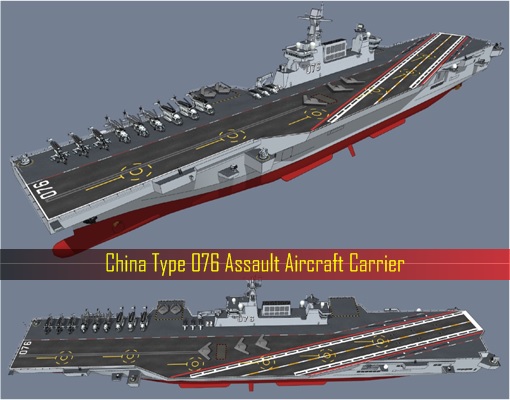
Not really. The new kind of LHD that the Chinese Navy plans to build would have an electromagnetic launch system (EMALS) on the flight deck for launching fixed wing aircraft, the same tool and technology used on an aircraft carrier, as well as the associated arresting wires for fighter jets to land on the ship. That means the Type 076 is a hybrid of LHD and aircraft carrier.
In fact, besides EMALS, the proposal shows features like UAV (Unmanned Aerial Vehicle), AAG (Advanced Arresting Gear), IEP (Integrated Electric Propulsion), 30 tonnes elevator and 4 gas turbine engines of 21MW. The Type 076 appears to be designed for fighter jets and drones that don’t require a short takeoff and vertical landing (STOVL) such as the U.S.’ F-35B fighter jet.
Obviously, it’s cheaper to operate combat drones than super expensive fighter jet like the Lockheed Martin F-35B, which cost about US$100 million a pop. China has developed stealth attack drones like the GJ-11 (Gongji-11), which made its debut at the 2019 National Day military parade. Such drones would fit perfectly into the “medium-sized” aircraft carrier “Type 076”.

Known as “Sharp Sword”, the GJ-11 stealth drones, believed to have two weapons bays capable of carrying a total of 4,400 pounds of bombs or missiles, has an estimated range of 4,000 kilometers (2,485 miles) with a cruise speed of 1,000 km/h. The Type 076 is the answer to support amphibious operations, like a possible invasion of Taiwan or landings on disputed islands in the South China Sea.
But it’s also possible that having EMALs on an assault carrier means that on top of GJ-11 stealth drones, China may be developing a new fighter aircraft suitable for the smaller version of an aircraft carrier. While China does not possess a STOVL fighter jet like the American F-35B, it appeared to have mastered technologies in electromagnetic launching systems.
The Chinese Navy officially started development work on the Type 075 in 2011 after the outbreak of Libyan civil war in 2011, which saw some Chinese-owned assets being seized or damaged. China realized they had little options to protect its properties. It urgently needed amphibious assault ships to fulfill various naval operations as well as conduct evacuations or humanitarian missions.
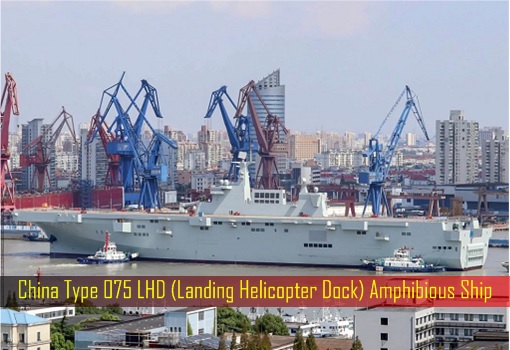
Type 075, the first amphibious assault ship domestically designed, was finally launched on September 2019. Amazingly, it took record time – about 6 months – for China to launch its second 40,000-tonne helicopter carrier in April 2020. That alone speaks volumes about China’s capability to replicate the new Type 076 light aircraft carrier once the first one goes into operation.
In terms of size and tonnage, Type 075 class is larger than the Australian Canberra-class or French Mistral-class and second only to the U.S. Navy’s Wasp-class and America-class. The proposed Type 076 will be slightly larger than the Type 075. To get an idea of Type 076 firepower, the America-class ship carries about 40% of the firepower of a Nimitz-class aircraft carrier.
Without aircraft like F-35B, China’s assault aircraft carrier Type 076 might seem to be less efficient or intimidating. But it is certainly much cheaper to acquire and use, not to mention lower maintenance cost. Instead of building one full-fledged nuclear-powered aircraft carrier, it can build up to 3 medium-sized aircraft carriers to carry high-risk missions in the region of South China Sea.
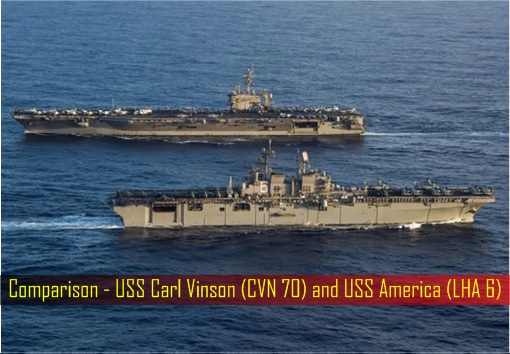
With ability to load up to 900 troops and space for heavy hardware like tanks and armour vehicles in the belly of the 273-metre long Type 075, a third vessel already is under construction. China reportedly plans to deploy four Type 075 assault ships by 2025. But with the latest proposal to build Type 076 light aircraft carrier, the U.S. and its allies have every reason to be concerned.
China has made it a public knowledge that the PLAN (People’s Liberation Army Navy) plans to grow its force of two brigades (10,000 troops) to seven with more than 30,000 personnel. Assuming there would be 4 aircraft carriers, four Type 075 and four Type 076, not only will China able to assert its authority in the South China Sea, but also challenge the U.S.’ maritime dominance in the Asia-Pacific, including its allies Japan and South Korea.
Other Articles That May Interest You …

|
|
July 27th, 2020 by financetwitter
|


|

|

|

|

|

|




























Comments
Add your comment now.
Leave a Reply